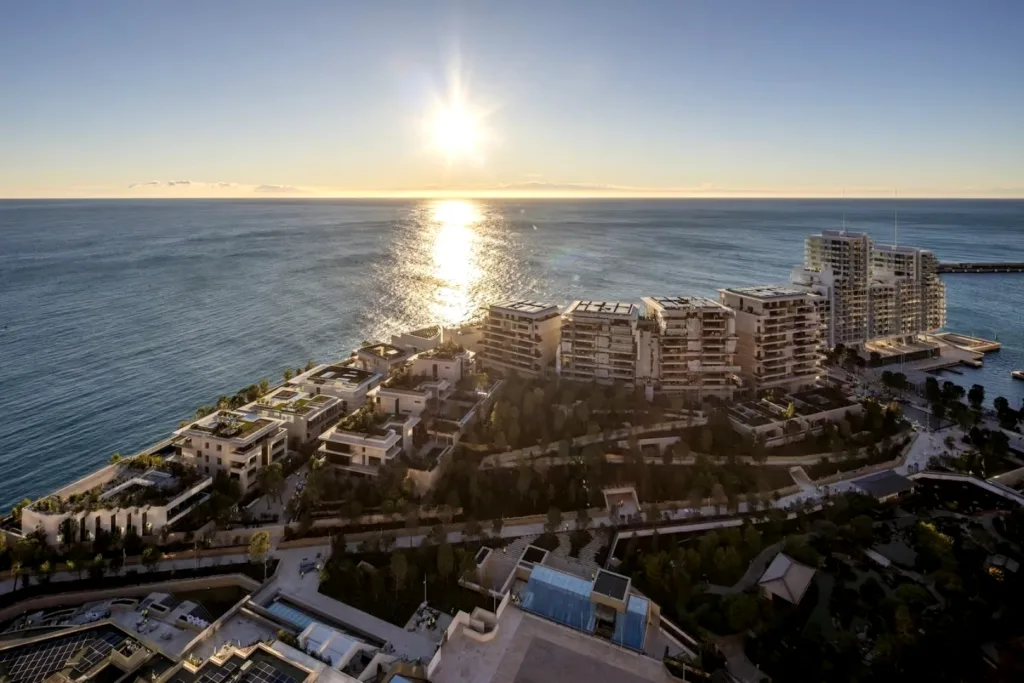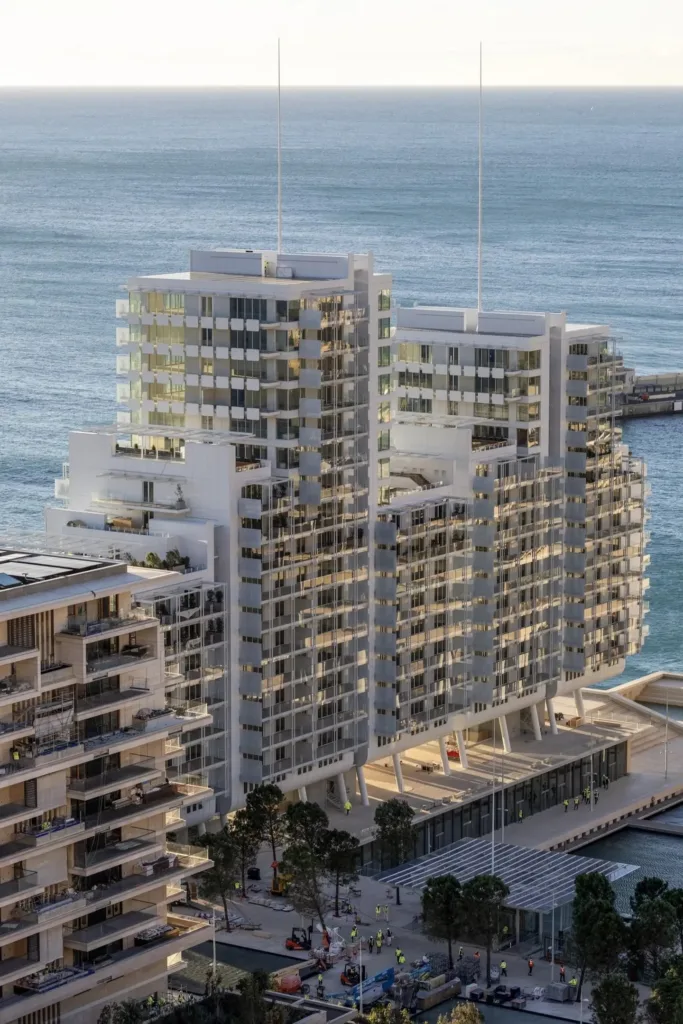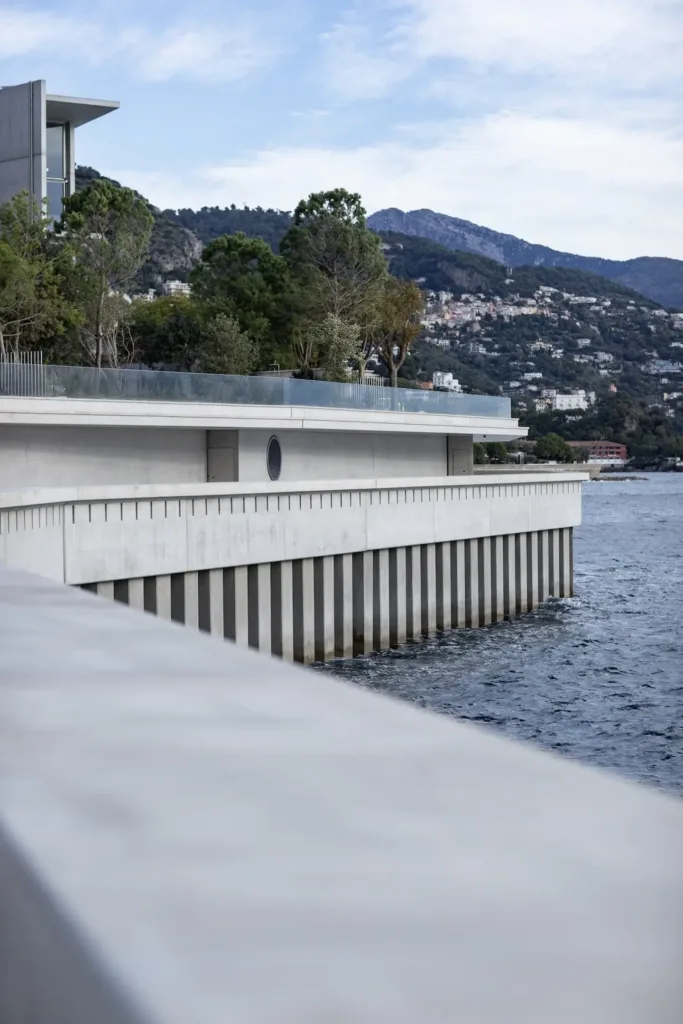In December 2024, Monaco launched the €2 billion Mareterra project, a floating eco-district designed to set a new standard in sustainable coastal urbanization. The development highlights Monaco’s architectural vision and its commitment to environmental sustainability, addressing challenges related to climate change.
It represents a significant achievement in urban planning and sets a precedent for future coastal developments worldwide. Mareterra reflects Monaco’s leadership, including HSH Prince Albert II, who views the project as a natural extension of Monaco’s territory.
The Development of Mareterra: A Vision for the Future
Mareterra, Monaco’s floating eco-district, represents a significant expansion of the city-state, adding six hectares (roughly 15 acres) to the country’s territory—approximately 3% of its total land area. The district was built using reclaimed land, constructed with underwater caissons (large concrete boxes), and was designed to minimize disruption to Monaco’s delicate marine ecosystems. Here’s an overview of the project’s key features:
- Location and Scope:
- Located along Monaco’s coastline, Mareterra adds six hectares to the principality, extending Monaco’s already limited land area.
- The district is designed to blend seamlessly with Monaco’s existing shoreline, creating a natural extension of the city-state’s territory.
- Residential and Commercial Spaces:
- The district features the Le Renzo residential complex, luxury apartments, and commercial spaces, all designed with modern living in mind.
- The project also includes a marina, providing ample space for yachts and boats, adding to Monaco’s renowned status as a hub for luxury and leisure.
- Public Access and Green Spaces:
- Half of the district’s area is dedicated to public parks and leisure spaces. This emphasis on public access aims to create a community-focused environment, offering residents and visitors access to nature while promoting sustainability.
- Parks and recreational areas are designed to encourage outdoor activities, with more than 1,000 trees planted throughout the development.

Sustainability at Its Core: Environmental Impact and Energy Efficiency
Mareterra’s development is guided by a commitment to sustainability, integrating environmentally friendly systems and technologies. This eco-district is designed to minimize its ecological footprint while enhancing Monaco’s long-term resilience in the face of climate change. The project reflects Monaco’s commitment to carbon neutrality by 2050 and incorporates several energy-efficient and environmentally conscious measures:
- Construction on Water:
- The use of underwater caissons was a revolutionary approach to expanding Monaco’s coastline, allowing for both land reclamation and the creation of marine habitats. These concrete structures not only provide land space but also support local marine biodiversity.
- Marine biologists were consulted to ensure that the project minimized ecological disruption. Measures were taken to relocate and protect native species, including Posidonia seagrass and red coral, during construction.
- Anti-turbidity screens were installed to protect nearby marine reserves, preserving Monaco’s coastal ecosystem.
- Energy Efficiency and Renewable Resources:
- Mareterra is powered by a combination of energy-efficient systems. Solar panels provide 40% of the district’s energy needs, harnessing the power of the sun to reduce dependency on traditional energy sources.
- A seawater thalasso-thermal loop system offers heating and cooling, making use of the natural temperatures at different ocean depths to regulate indoor climates and minimize energy consumption.
- Rainwater harvesting systems are in place for irrigation purposes, reducing the need for potable water and promoting water conservation.
- Green roofs, along with the district’s over 1,000 trees, help mitigate the urban heat island effect, improving air quality and providing additional green space for residents.
- Environmental Certifications:
- The Mareterra development has earned several prestigious environmental certifications, including BREEAM “Excellent,” HQE Aménagement, and BiodiverCity. These certifications underscore the project’s commitment to sustainability and highlight its eco-friendly design and operations.
- Other recognitions include Espace Vert Écologique and European Clean Ports, further solidifying Mareterra’s role as a leader in sustainable urban planning.

Cultural Enrichment and Community Spaces
In addition to its environmental initiatives, Mareterra is designed to enhance Monaco’s cultural infrastructure. The district blends modern architectural elements with cultural and historical influences, creating a unique space that offers both recreational and cultural opportunities for residents and visitors.
- Cultural Venues:
- The Grimaldi Forum, Monaco’s renowned cultural venue, has expanded as part of the project. The expansion adds 10,000 square meters of space, with 6,000 square meters dedicated to exhibition areas. This larger venue allows for more cultural events, exhibitions, and performances, further enriching the local arts scene.
- Several public art installations and restored artworks are featured throughout the district, including Alexander Calder’s “Quatre Lances” in Princess Gabriella Square. These additions enhance the district’s visual appeal and offer a blend of modern and traditional art to enjoy.
- Meditation Space and Wellness:
- A Meditation Space, designed by Tia-Thủy Nguyễn, offers a peaceful retreat for residents seeking respite from city life. This area is designed to foster mindfulness and relaxation, promoting well-being within the urban environment.
- Public green spaces, walking paths, and a pedestrianized promenade encourage physical activity and provide scenic views of Monaco’s coastline. These features are an essential part of the district’s design, ensuring that health and wellness remain a priority for residents and visitors alike.

Designing for the Future: Climate Resilience and Sea-Level Rise
As concerns over climate change and rising sea levels grow, Mareterra was meticulously designed with long-term resilience at its core. The district incorporates a range of adaptive strategies to ensure its sustainability and livability as environmental conditions continue to evolve. Key measures include:
- Underwater Caissons: The construction of underwater caissons was a key decision in ensuring the district’s resistance to rising sea levels. These structures are built to withstand the pressures of climate change, ensuring long-term stability and security for the development.
- Flood-Resistant Materials: The use of flood-resistant building materials further enhances the district’s ability to withstand water-related risks, offering an added layer of protection against potential flooding.
To mitigate potential flooding and sea-level rise, Mareterra incorporates elevated structures that are designed to keep important areas safe and secure, even under extreme weather conditions.

The Collaborative Effort Behind Mareterra
The success of Mareterra is the result of collaboration among over 300 companies from more than 40 countries. This international partnership brought together innovative technologies, design expertise, and sustainability practices, positioning Mareterra as a model for future coastal urban developments worldwide.
A New Benchmark for Coastal Urbanization
Mareterra shows that cities can expand while minimizing their environmental impact. The project blends eco-friendly design with a focus on community, setting a new standard for sustainable coastal urbanization.
Image source- © Loïc Thébaud for Mareterra, newatlas.com

